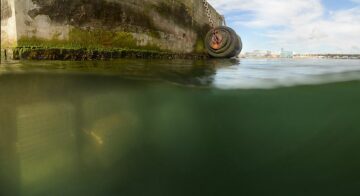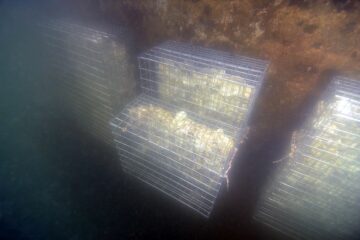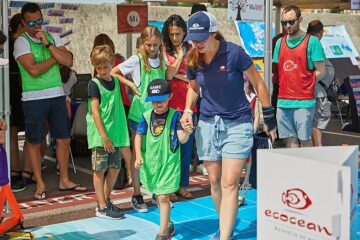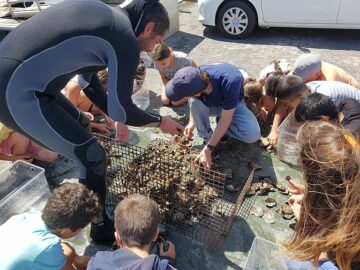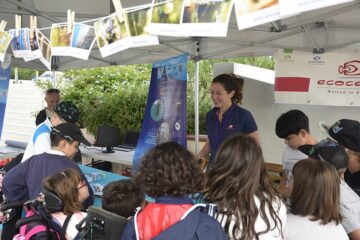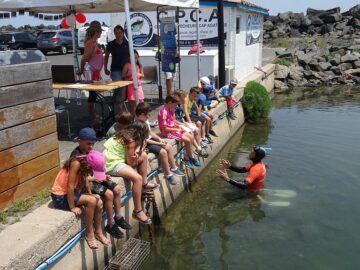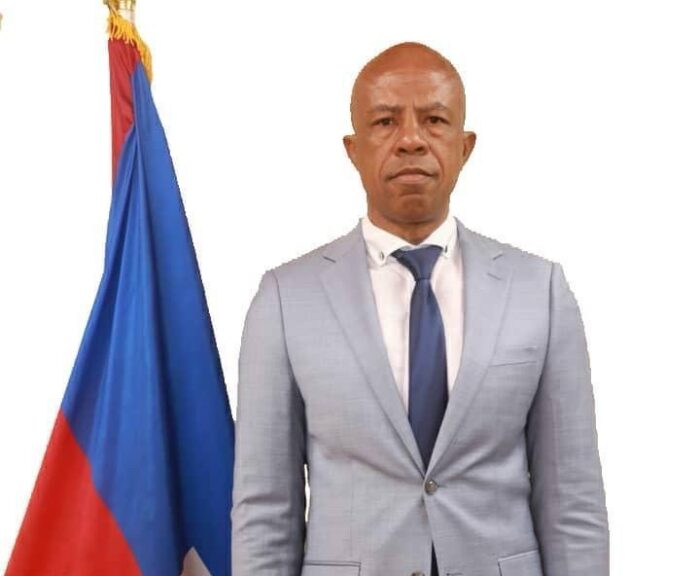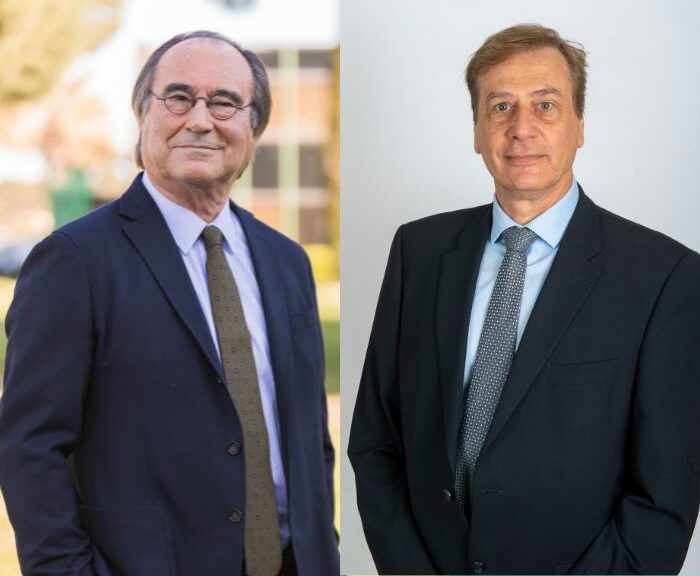The pressures exerted by man and his activities on coasts and coastal ecosystems grows stronger year by year. Recent years have certainly seen an awareness of the need to protect biodiversity. But to go further, and thus comply with Commitment 10 of the AIVP Agenda 2030 – Protecting biodiversity, it is necessary to conceive and put into practice concrete, operational solutions. That is precisely the reason for the existence of Ecocean, as we discussed with Gilles Lecaillon, founder and current CEO of Ecocean.
Ecocean has been a member of AIVP since 2017
AIVP – Pollution, habitat destruction, overexploitation of marine resources, and of course climate change: there are ever more threats to coastal marine biodiversity. Ecocean was founded in 2003 to meet them. What are your objectives and what technical solutions do you propose?

Gilles Lecaillon, CEO of Ecocean – We decided to concentrate on one part of the life cycle of coastal marine animals. A life cycle that consists of several complicated stages, in each of which high mortality occurs naturally. The latest stages are crucial, and this life cycle is closely connected with shorelines all over the world. However the shoreline has been severely transformed by world populations, and ports and marinas have a real impact and therefore also a role to play. Everybody wants to live by the sea, and the artificialisation of the coast is a direct consequence of this dream. Coastal fish, crabs, shrimps, sea urchins, octopus and other coastal animals all need, at a certain stage of their lives, complex habitats that are little areas of coastal seafloor in good condition. These are essential habitats which provide ecological functions (e.g. nurseries) that are vital for a properly functioning ecosystem. Ecocean’s idea was to focus its actions on the post-larval stages when they reach the coast. Helping a fish or a crab that has a one in a thousand chance of survival, by helping it to grow to a refuge size where it has an 80% chance of surviving to adulthood, is a concrete action that can help to change things!
But even if the idea of helping nature may appear absurd, today there are too many of us and we exert too many pressures on these marine ecosystems. As a result, ecological engineering, what you might call engineering to help nature, is one of the solutions. Of course, it is not the only one. We must continue to protect and preserve natural ecosystems in good health as we do with Marine Protected Areas, continue to improve water quality, continue to raise awareness and above all avoid degrading the environment. These actions should always be the guiding principles of all that we do. At Ecocean, we have innovated and looked for practical operational solutions; and of course we have shown their ecological effectiveness (numerous theses and R&D projects) to reduce Man’s impact on the coastal marine environment.
We offer two solutions:
- The Biohut©, which is a patented artificial habitat that provides ecological functions in the heart of port infrastructures. The module is 100% recyclable and contains waste seashells (often oyster shells). It complies with the conditions of the circular economy. See: Video
- BioRestore©, which is a unique procedure for capturing fish larvae at sea before they reach the coast, carried out by professional local fishermen. These larvae are raised in a farm on shore for several months until they are big enough to survive easily when they are released back into the sea.
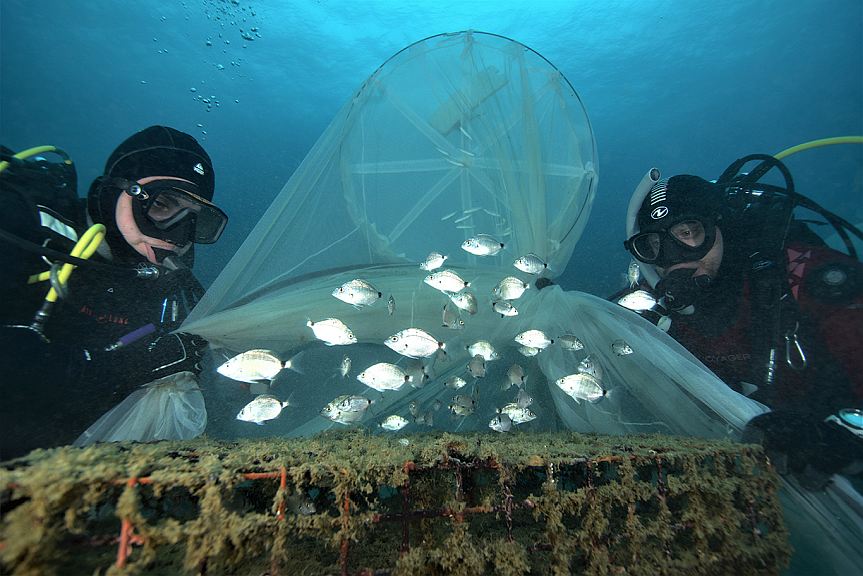
AIVP – You have applied your solutions in France and now throughout the world. Can you give us two or three especially representative examples of this know-how?
Gilles Lecaillon, CEO of Ecocean – We have installed more than 4,400 Biohuts in 9 countries. Today there are nearly 40 marinas and 4 commercial ports around the world that have been equipped. There are two excellent recent examples of projects with Biohuts© in Denmark: in May 2020 we equipped the commercial port of Aarhus, in parallel with a collaboration agreement with the local university which undertook to follow up the installation with its students. More recently, in summer 2021, 100 Biohuts were installed in 9 different zones of the port of Copenhagen in partnership with the Danish WWF. This is the biggest Biohut project in the world. Ecocean is very proud to see that the WWF believes in our solutions.
With the BioRestore© repopulation solution, in 6 years we have released nearly 15,000 juvenile fish ready to enter the adult population back into the sea between Marseilles and La Ciotat in the Mediterranean. They belong to more than 100 species of fish, including groupers, porgies, sea bream, etc. Five professional fishermen work with us, and we have created work equivalent to two full-time jobs. See video: Port of Marseilles – project Casciomar/solution BioRestore
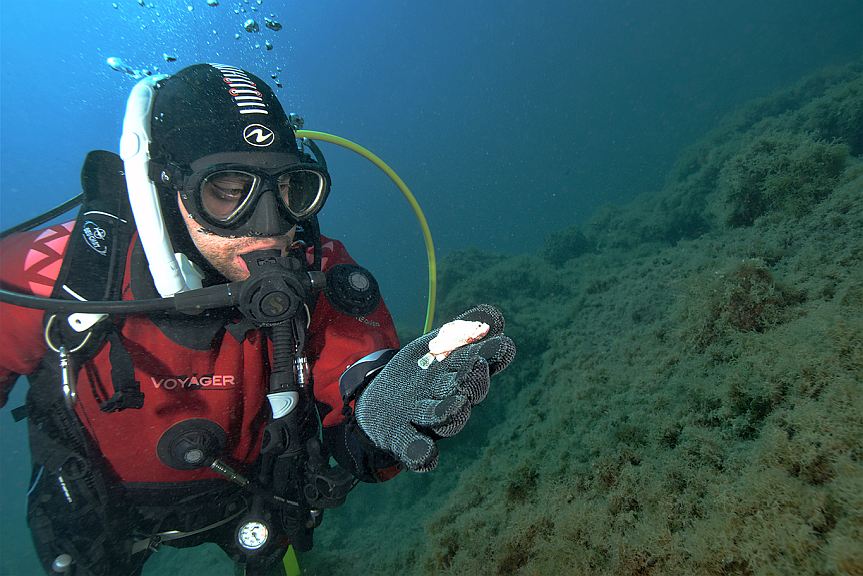
AIVP – Local institutions, ports and industries are the most important stakeholders when addressing these challenges facing marine biodiversity. Are they now more receptive, and how much obstruction and reluctance still exist?
Gilles Lecaillon, CEO of Ecocean – Of course. Ten years ago, when I started talking to port managers about biodiversity, they just stared. But when they understood that they could play a real, positive ecological role, both in the ecosystem and in the minds of the people, they joined in enthusiastically. The first were the ports of Monaco and Marseillan (in Hérault, France) in 2014.
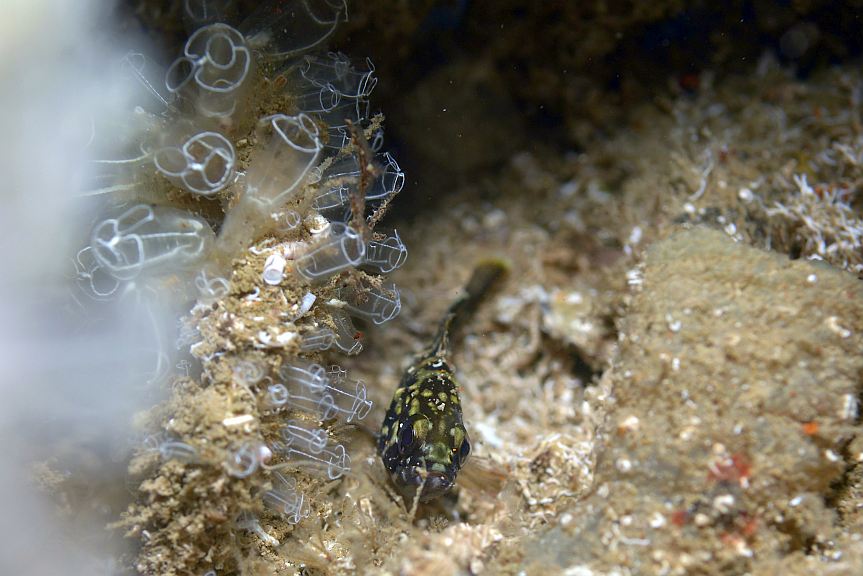
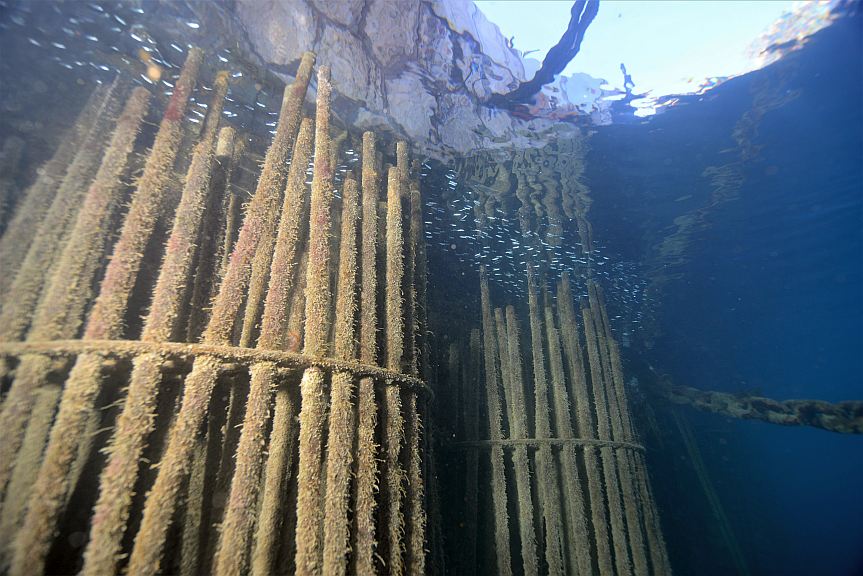
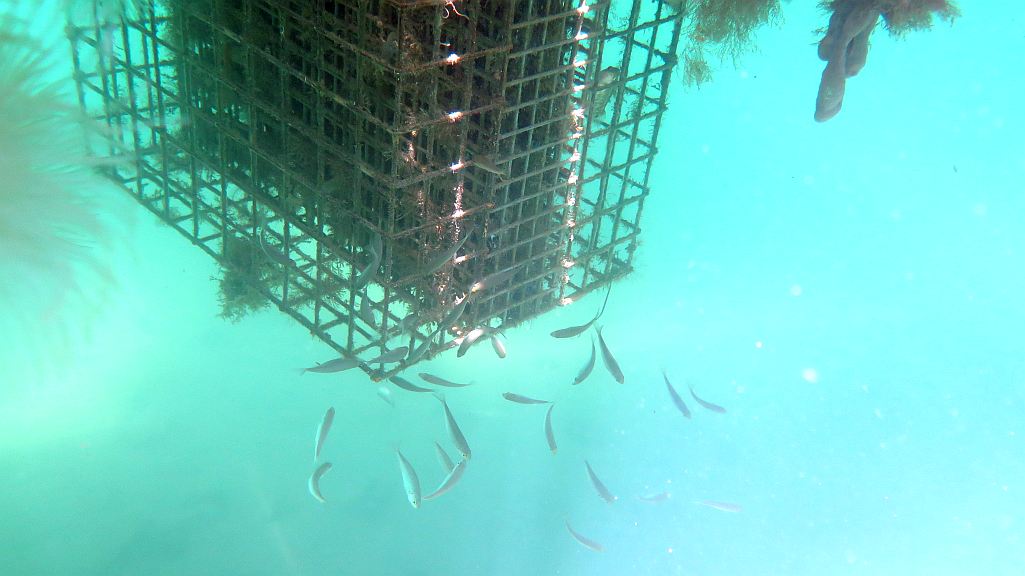
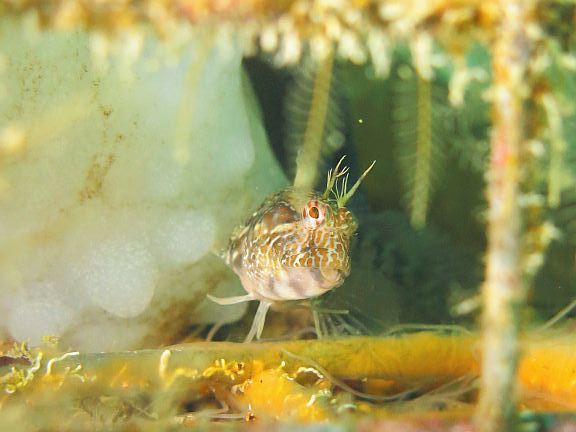
Today, port and marina managers call us to ask if they can be given equipment, if they can become involved in actions for biodiversity.
You must understand that commercial ports have a real part to play. A scientific publication has shown that Biohuts installed in commercial ports produce even better results than in marinas. The shallow waters of a commercial port really are even more hazardous for the small individuals that arrive there, and when they find refuge in the Biohut, they stay there while they develop. I don’t really meet reluctance, but people have their priorities. Today, the priorities are on reducing energy consumption and air micropollutants, and improving water quality. But once people commit to these areas, they should not hesitate to get involved in the issue of biodiversity as well. It is this action on biodiversity which will raise awareness among the inhabitants of port cities and port users. So, it is a super vector for showing the environmental steps being taken by the port.
But please note, it is not worth getting involved in actions for biodiversity if there is not already a commitment – and results – in terms of water quality, or reducing emissions of pollutants. These are essential steps prior to the installation of solutions for biodiversity.
AIVP – How do you work together with the various stakeholders that we have been talking about when it comes to putting your solutions into practice in real terms?
Gilles Lecaillon, CEO of Ecocean – We meet the managers directly, or through conferences like the AIVP Congress. You really have to explain to people that operational solutions exist, that they are easy to install and not at all demanding. You have to talk a lot, and also present scientific results. You have to be very careful with biodiversity. It is so easy to do things that are irrelevant. Tyres or cement blocks may attract marine life, but that is not “helping biodiversity”! The solutions implemented need to be validated scientifically, and the materials used must be noble and easy to recycle. We have to be part of the circular economy and stop consuming scarce raw materials (sand for cement) or materials not suitable for the marine environment (plastic). We are sufficiently innovative in France to do better than that. Ecocean uses nothing but raw steel and oyster shells. We have carried out three research theses with the University of Perpignan (CREM), and a fourth is ongoing, on trophic relationships, at the University of Nice. More than 6 publications are available in high-impact journals, as well as reference works co-authored with experts (Agence de l’eau Rhône Méditerranée Corse-AERMC, Universities, Pôle Mer, etc.). These are essential deliverables, because we show that actions for biodiversity really work, and that they can reduce or attenuate impacts.
Because they saw that we have more than 10 years of feed-back from our experience in the coastal marine environment, AERMC launched a plan to recover coastal nurseries in the Mediterranean in October 2021, with a committed budget of 3 M€ for 3 years. There is positive progress, and it is important to highlight what is being done.
AIVP – Raising awareness in children is also an important part of your activities. What do you do to achieve this?
Gilles Lecaillon, CEO of Ecocean – It has become a major thrust. To start with, we are ecologists and we have developed ecological solutions which have been validated scientifically. Then, as everything happens underwater, we have worked with professionals to find ways of bringing the information to the surface, to show the results, and the life that exists in the port.
Board games, study tours, open-air games have been created which activate the senses, such as touch, hearing and smell. These trigger emotions which make the children more receptive to our message. We have raised awareness in more than 5,000 children through the port projects that we have carried out. The port-city relation is strengthened by these awareness actions. It is also a source of legitimate pride for the children; because if they understand that a port, traditionally considered a “parking area for ships”, is an artificial ecosystem that is home to tiny, fragile creatures, they will also have more respect for natural coastal marine ecosystems.

